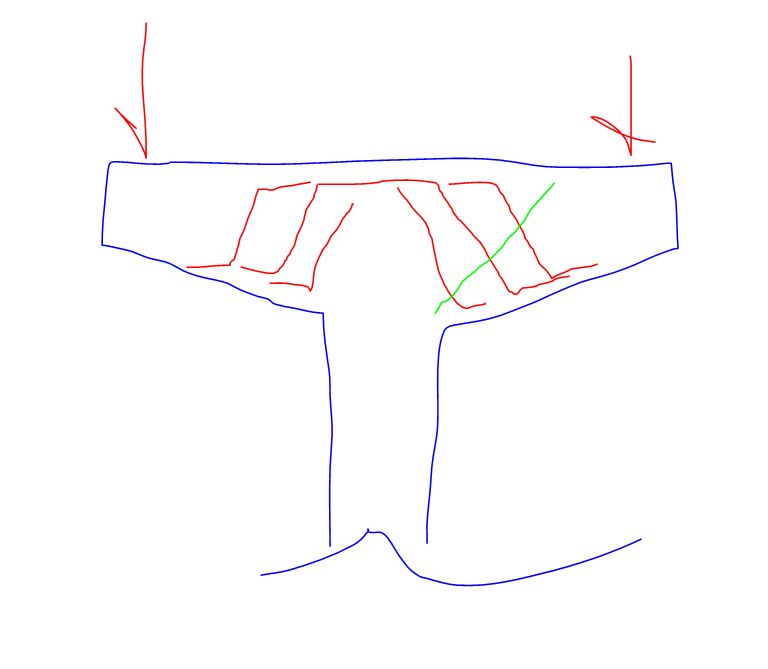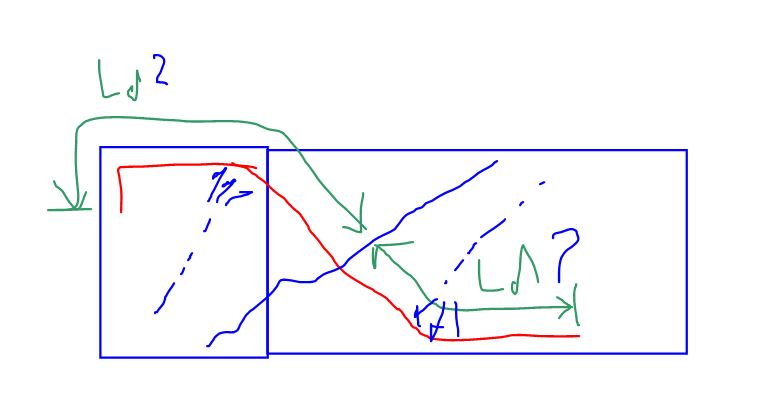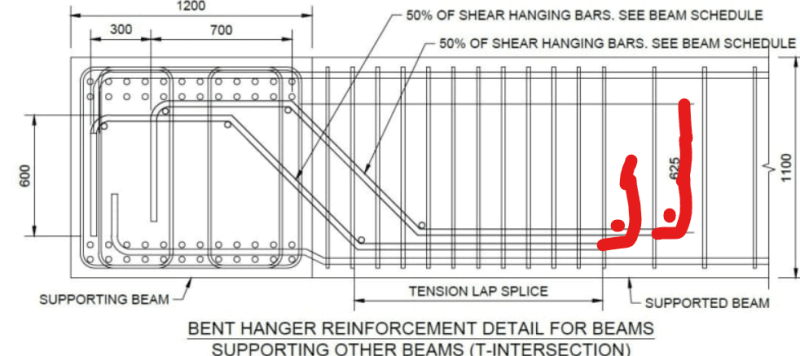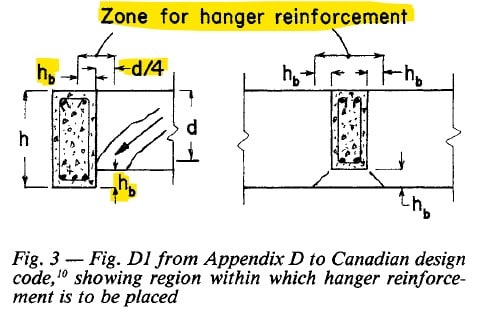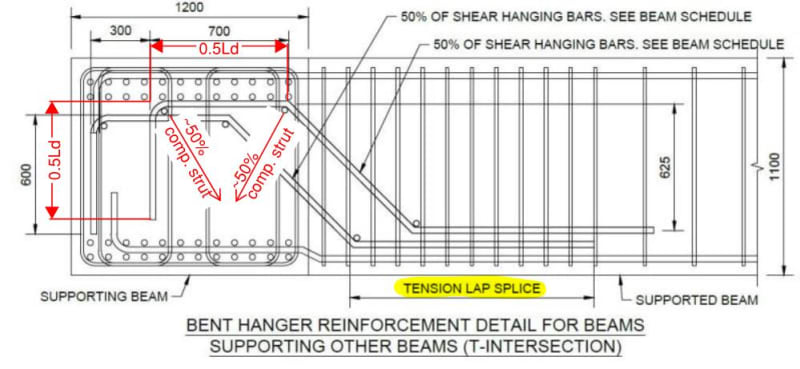I appreciate everyone's responses and interest in the subject!
bones206, thank you for the reference document. Very informative. Also noting that earlier version of this requirement extended the 'zone of hanger reinforcement' by as much as d/4 into the supported beam for beams of equal depth...something that the current revision does not.
KootK, to address your comment about lack of a 'robust mechanism for checking', I agree that this is, in general, an incomplete truss-and-tie set-up that doesn't carry the load to any definitive end. This being said:
1. Both the supporting and the supported beams have all the required one-way shear and torsional reinforcement stipulated elsewhere in the design guide up to and through the intersection.
2. The diagonal bars are in addition to all other transverse reinforcement and are required to address the discrete issue of the concrete breakout in a hanging beam scenario where rebar congestion is an issue.
3. Given 1&2, if the concrete breakout failure may be addressed by the additional diagonal bars, then all other reinforcement will still be there to ensure that other modes of failure do not occur. For this reason, in my opinion, a truss-type 3D model that aims to replicate all developing struts and ties may be avoided once the diagonal bars are extended/developed outside of the 'zone of interest', and if all stirrups in the supporting beams are engaged.
Regarding forces, placement, etc.
- Compression strut check as per strut-and-tie model. yes. This is one of the reason why two offsetting rows of bent bars are proposed.
- The bars to carry full shear across the interface at an angle of 45 degrees. Rebar force = 1.414xVf.
- For the T-intersection case, arguably the more difficult of the two being discussed, the bars are fully developed before the first bend in the supported beam. Tension splice is what I actually called out.
- For the end of the bar in the in the supporting beam, I consider that ~ 50% is developed before the first (90deg) bend and fully developed before the next (45deg) bend. This way I rationalized approximately equal forces between the 2 forming struts in the supporting beam.
- The force from the diagonal bar should create torsion in the supporting beam. This torsion being no different to the force caused by eccentricity of compression strut in A23.3 CL 11.2.12.2 about center of the supporting beam. Transverse reinforcement to resist this force should already be there as prescribed by other clauses of the design guide.
Some testing and prescriptive guidelines would certainly instill more confidence...as for anything else I suppose.
![[glasses] [glasses] [glasses]](/data/assets/smilies/glasses.gif)
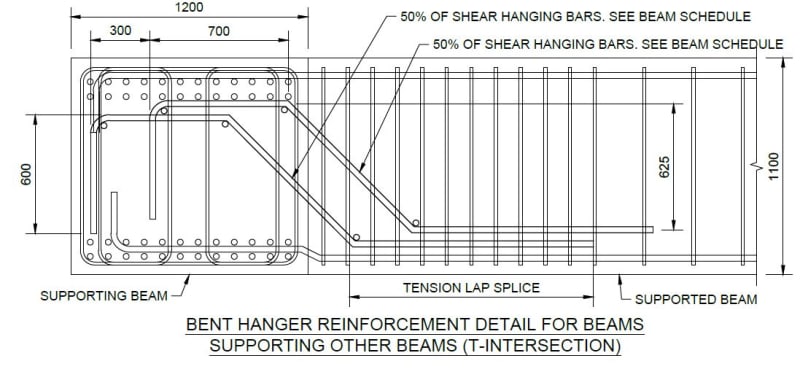

![[glasses] [glasses] [glasses]](/data/assets/smilies/glasses.gif)



